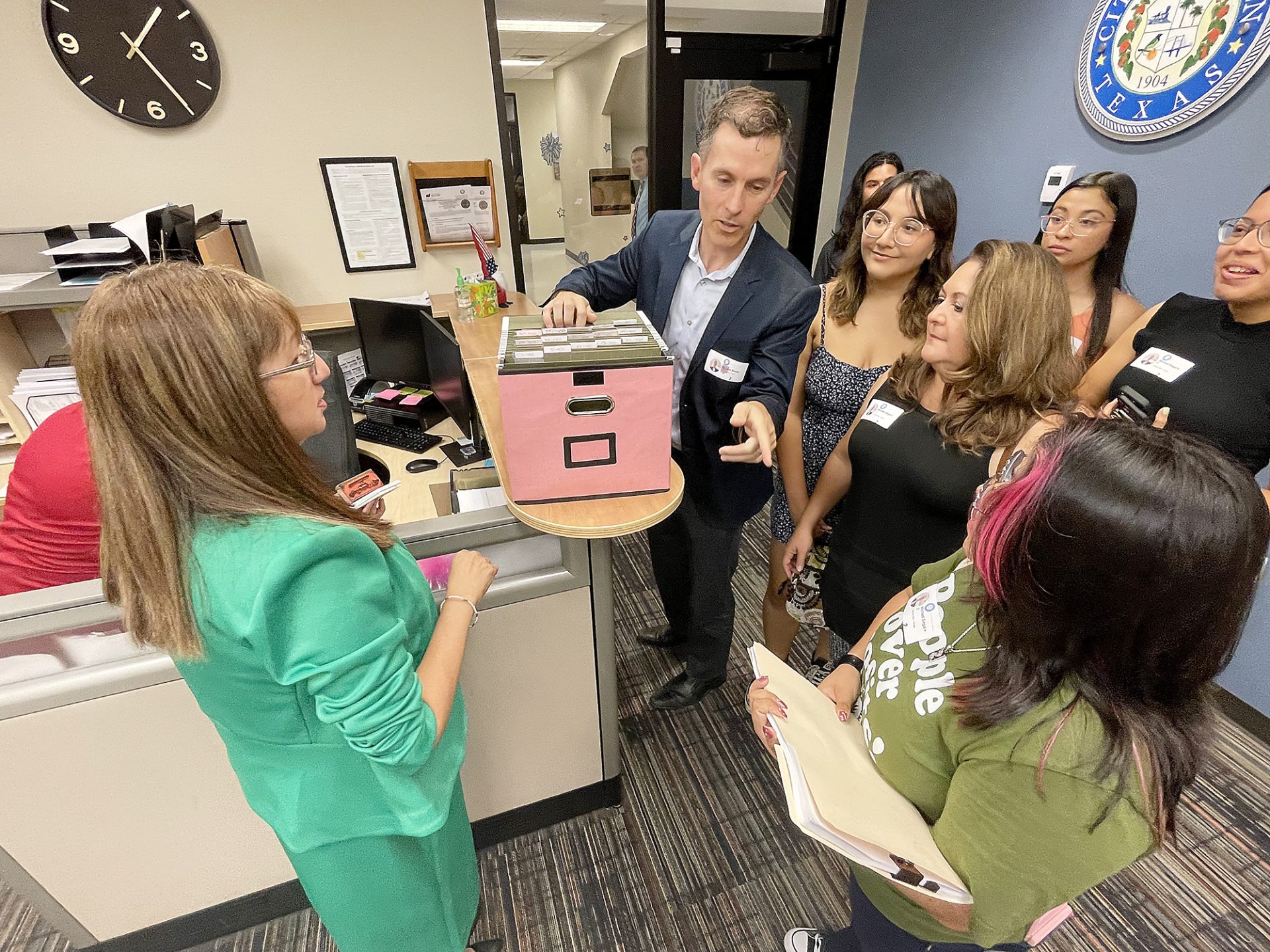SAN JUAN, Texas – The managing director of the North American Development Bank has responded to calls from U.S. senators and representatives to re-establish the Border Water Infrastructure Fund.
John Beckham told the Rio Grande Guardian International News Service:
“We appreciate Senator Cornyn and the other members of the Texas delegation for their thoughtful letter, which has been shared with our Board. The letter’s recommendations, and other possible lines of action, will be discussed at our upcoming Board meeting in November.”
Beckham added: “Throughout this year, we have been engaging with border communities, agricultural water users, and irrigation districts on both sides of the U.S.-Mexico border so we can effectively support the planning and investment required. Our engagement is both a response to the current water emergency and our longstanding commitment to invest in water infrastructure.”
The U.S. Environmental Protection Agency writes about the U.S.-Mexico Border Water Infrastructure Program on its website. It states:
“EPA funds and administers the U.S.-Mexico Border Water Infrastructure Program (BWIP) for the region 100 kilometers (62 miles) north to 100 kilometers south of the U.S.-Mexico border. Infrastructure project development, design and construction within the region is implemented via cooperative agreements (grants) to the North American Development Bank (NADB) and Mexico’s CONAGUA jointly invests in those projects in the south.
“Several waterbodies in the border region—including the Tijuana, New and San Pedro rivers—either originate in or run through Mexico and flow northward into the United States. Another river, the Rio Grande, forms part of the border between the United States and Mexico. Lawmakers understood that investment was needed to protect the country’s shared rivers by addressing inadequate wastewater infrastructure and that human health in the region was suffering from the lack of access to proper water and wastewater service.
“Transboundary water migration and lack of clean drinking water affect both the environment and the health of people on each side of the border. As a result, the BWIP was created in the 1990s as a bi-national effort to provide border communities with safe drinking water and sanitation.
“Water infrastructure investments have paid off. To date, the BWIP has funded 143 projects. More than nine million people are benefiting from 129 completed projects, and almost 1.8 million people will benefit from projects currently under construction. Since 2003, the program has provided approximately 61,179 homes with new or improved access to safe drinking water and approximately 968,410 homes with new or improved access to wastewater collection and treatment.”
Calls to reinstate the Border Water Infrastructure Fund have come from U.S. Senators John Cornyn and Ted Cruz, and U.S. Representatives Henry Cuellar, Vicente Gonzalez, Veronica Escobar, Tony Gonzales, and Monica De La Cruz. In a letter to NADBank’s board of directors, the lawmakers urged the board to take swift action to restore a “critical program” that improves water security for border communities.
Here is a copy of the letter:
October 7, 2024
United States Board Members
North American Development Bank
203 S. St. Mary’s St., Ste 300
San Antonio, Texas 78205
Dear Members of the Board,
We are writing to express our strong support for the re-establishment of NADBank’s Water Infrastructure Fund and to urge the Board to take swift action in restoring this critical program. The need for sustainable water management in the U.S.-Mexico border region is greater than ever. Re-establishing the fund would be a significant step in ensuring long-term water security for both municipal and agricultural communities.
As it did in previous years, NADBank should use funding from retained earnings to provide concessional financing such as grants or subsidized loans for water conservation and diversification projects. This investment is essential to the well-being of our American municipalities and agricultural projects, and we fully support the Bank’s role in overseeing and implementing the fund to ensure these resources are allocated effectively.
Any grant funding re-established through this program must be directed to both municipal and agricultural projects. These projects should not only conserve water, but also explore new ways to create additional water sources in the border region. In doing so, NADBank can address the urgent need for water security on both sides of the U.S.-Mexico border.
The flexibility of the grant program is critical. NADBank must be permitted to fund partial project costs in coordination with loans to enable solutions for a wide variety of projects. Additionally, NADBank should not be prohibited from providing loan financing to cover any remaining costs so as to ensure the fund remains adaptable and accessible.
Leveraging resources from other federal and state agencies such as the USDA-Rural Development, Bureau of Reclamation, and the Texas Water Development Board, will be critical in closing the funding gap for these water projects. We urge the Board to coordinate efforts with these entities to maximize the impact of NADBank’s investments.
Lastly, we request that U.S. Board members encourage Mexico to meet its capital commitments in a timely manner, and that the U.S. Board use its voice and vote to expedite the release of the remaining U.S. capital in line with Mexico’s payments.
Thank you for your attention to this matter. We are confident that the re-establishment of the Water Infrastructure Fund will greatly benefit both sides of the border, ensuring that our communities have the water resources they need for the future.
Sincerely,
U.S. Sen. John Cornyn
U.S. Sen. Ted Cruz
U.S. Rep. Henry Cuellar
U.S. Rep. Vicente Gonzalez
U.S. Rep. Veronica Escobar
U.S. Rep. Tony Gonzales
U.S. Rep. Monica De La Cruz
The post NADBank’s managing director responds to calls to re-establish the Border Water Infrastructure Program appeared first on Rio Grande Guardian.
 (2).png)
 2 weeks ago
48
2 weeks ago
48









 English (US)
English (US)